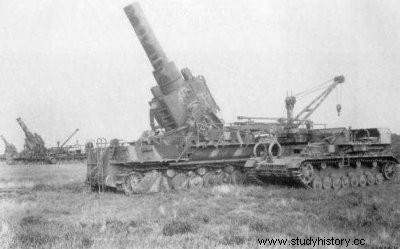
In fact, each passing day made the position of the Soviet coastal army even more perilous. In repelling the continual German attacks, she suffered heavy losses, both in men and material, losses that nothing could replace since all the reserves had been used. From the beginning of the second half of June, the defenders began to feel badly for the lack of ammunition, the increasing pressure of the German blockade increasing the difficulties of transporting shells to Sevastopol. The quantities that arrived were not enough to cover more than a third of the needs and, at the end of the month, the Soviet artillery was reduced to firing only at close range. The fight turned increasingly hand-to-hand, with counter-attacks supported only by a few machine-gun fire and a few hand grenades. Gunners, mortar crews and tank crews often took part in the hand-to-hand combat. local Soviet ordered its units to fall back to the southern shore of the bay. On the southern outskirts of the city, the Red Army repelled, until June 18, all attempts by the Wehrmacht to infiltrate the Yalta highway and the Germans made only insignificant progress in this sector. It was not until June 28 that they succeeded in pushing the Soviets back towards the station and the Inkermann road.
By the end of June, the defenders of Sevastopol were in a critical situation. Although they had inflicted considerable losses on the enemy, the Soviet units had themselves suffered considerable losses. The planes of the Sebastopol defense zone had to withdraw to airfields in the Caucasus, leaving the defenders without air cover, while the D.C.A. was silent for lack of ammunition. Now the Luftwaffe had to fear only infantry small arms fire. There were hardly any shells left, so the infantry had to operate with virtually no artillery support. Despite the fragility of their forces and the fact that their ammunition reserves were at their lowest, the Soviet soldiers continued to resist heroically in their positions.
On June 26, the last reinforcements — the 142' infantry brigade — arrived on board warships and from then on men, ammunition and food only reached Sevastopol by submarines and in extremely limited quantities.
In on the night of June 28–29, the Germans crossed North Bay under the protection of a smoke screen and entrenched themselves on the southern shore. On the morning of the 29th, they attacked violently from the heights of Fedioukhin and Noviye Shula to the northwest, in the direction of Mount Sapoun, and broke through the Soviet defenses there. On June 30, the twenty-fourth day of the offensive, the Germans managed to open the road to Sevastopol and, that evening, began a retreat that would last until July 3.
